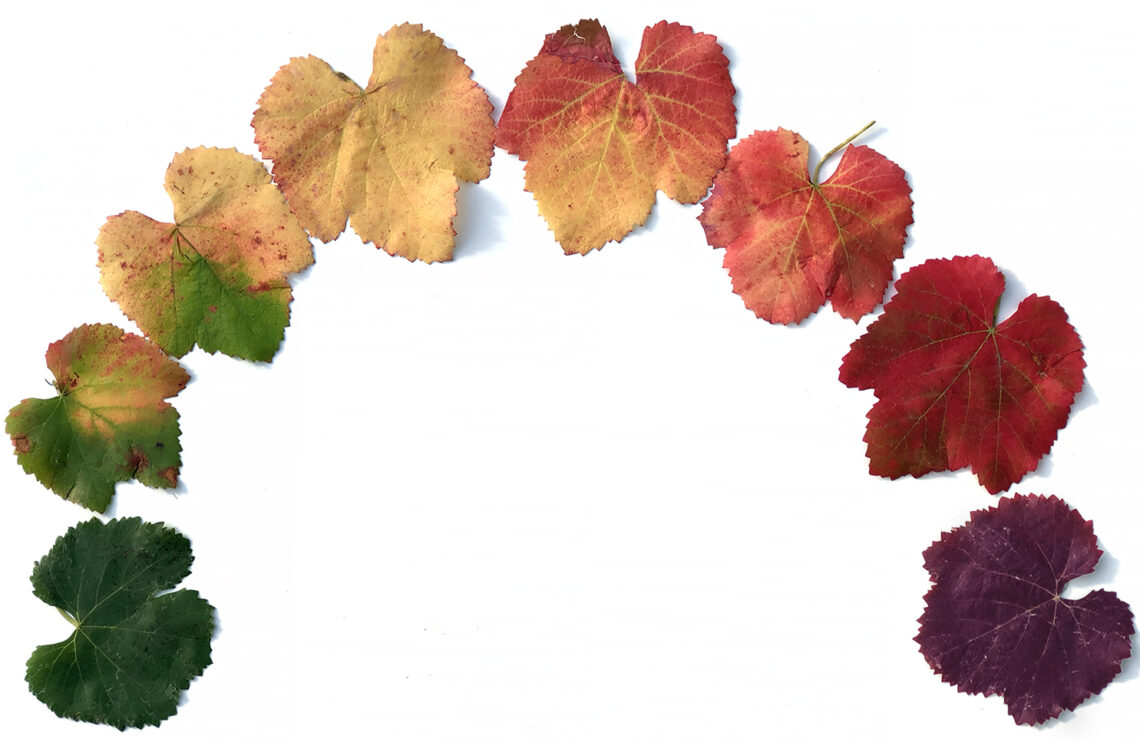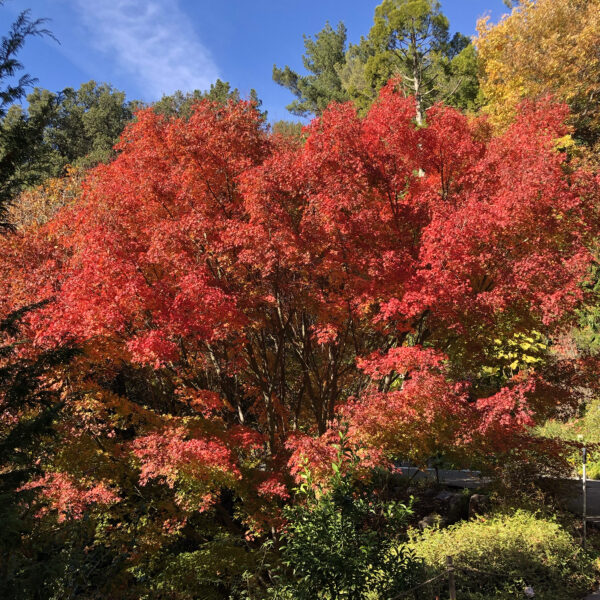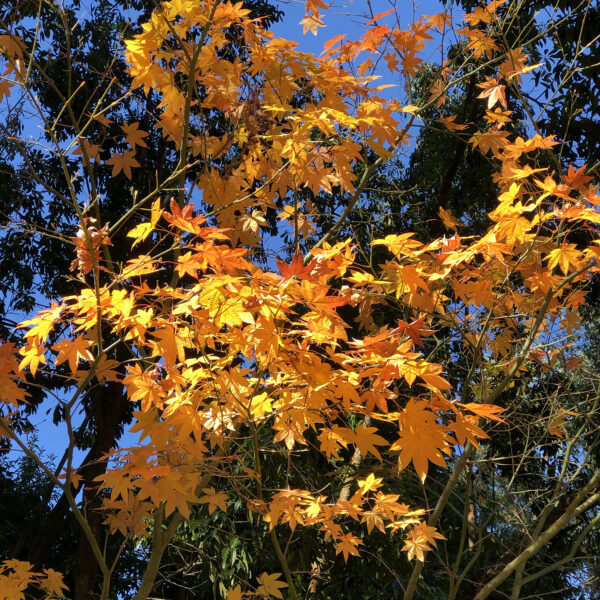
Dr. Lew Feldman, Garden Director
The onset of fall brings cooler weather, shorter days, and brilliant color seen across a range of plants. We are presented with stunning displays of orange, yellow, red and purple leaves. What causes the foliage to change color?
The environmental cues that make a plant ready for winter are typically the shortening of day lengths and colder night time temperatures. The shortening day lengths serve as a reliable signal for anticipating frosts before they occur.
The transformation in leaf color usually begins with the disappearance of the typical green hue, due to the loss of chlorophyll, and with the simultaneous appearance of red, orange and yellow pigments. These changes in leaf color mark the beginning of processes which will ultimately result in the death of the leaf and in its separation from the plant.
These underlying pigments fall into several groups, which are distinguished by their chemical makeup and colors; carotenoids (typically yellow or orange) and anthocyanins (typically red and/or purple). The browns, which are usually the last color to appear, are usually the result of chemical changes (oxidation) in both the anthocyanins and the chlorophyll.
Although temperature affects the formation of new pigments, it is mainly the light levels that are responsible for fall foliage colors. Sunny days are required for the most vivid color displays, because anthocyanin production requires bright light. Overcast conditions leads to more yellow and brown foliage. Cloudy and warm falls can lead to dull foliage colors. The brightest autumn colors are produced when dry, sunny days are followed by cool, dry nights.
Depending on environmental conditions, different trees have different proportions of carotenoid and anthocyanin pigments, which underlies the range of fall foliage colors, from solely yellow or red to golden-yellow, purple-red, light tan, crimson and orange-red.
In conclusion…vibrant fall colors are a result of the loss of chlorophyll, accompanied by the unmasking of already-existing pigments and the synthesis of new pigments.
Although much is known about the physiology and biochemistry of foliage color change, the adaptive value remains a mystery. Scientific interest in the evolutionary advantage of leaf color change has recently focused on the photoprotection hypothesis, which posits that the development of red pigments protects plants against the harmful effects of light at low temperatures and thereby allows the chlorophyll to function for a longer period, thereby extending the period of “food” production by the plant.
A second hypothesis for winter reddening of foliage in the fall, is that the red coloring serves as a warning signal that reduces insect attack. According to this hypothesis, insects would perceivethe red color as a signal that the tree is not a suitable host for insects, because of lower nutritional quality or impending leaf fall. Because in the fall many insects are seeking plants in which to overwinter, and then to feed on in the spring, deterring insect infestation in the fall, through the production of red pigments, may be adaptive for plants. In support of this idea, studies suggest that insects, particularly aphids, prefer green over red leaves and there are reports that in apples infested by aphids, that a greater proportion of aphids survive to maturity by avoiding trees with red leaves. However, the jury is still out on the validity of both the photoprotection and the deterrence of herbivory hypotheses.
Finally, it is worthwhile considering the likely effects of climate change on the development of fall foliage coloring. Current evidence supports the view that climate warming will delay the onset of fall leaf coloring. On the other hand, the likelihood of increases in droughts will probably advance the timing of fall leaf senescence.


